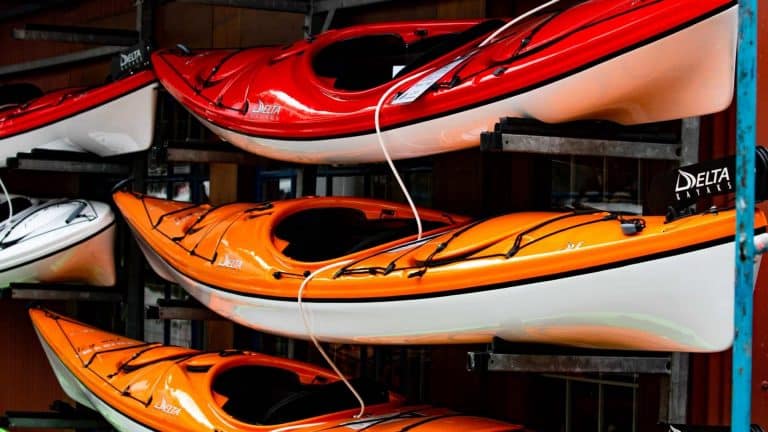Beginners Guide To Snowshoeing – Get Started Today
What is snowshoeing?
Snowshoeing has been an essential mode of winter transport for humans for thousands of years. People who live in areas that have a lot of snowfall every winter are accustomed to using snowshoes, however, it is now becoming a popular activity for others on their holidays and skiing trips.
Snowshoeing is essentially an extension of hiking. In simple terms, it involves walking over snow with the assistance of snowshoes, a type of outer footwear that features a wide frame to distribute the weight of the person over a larger area.
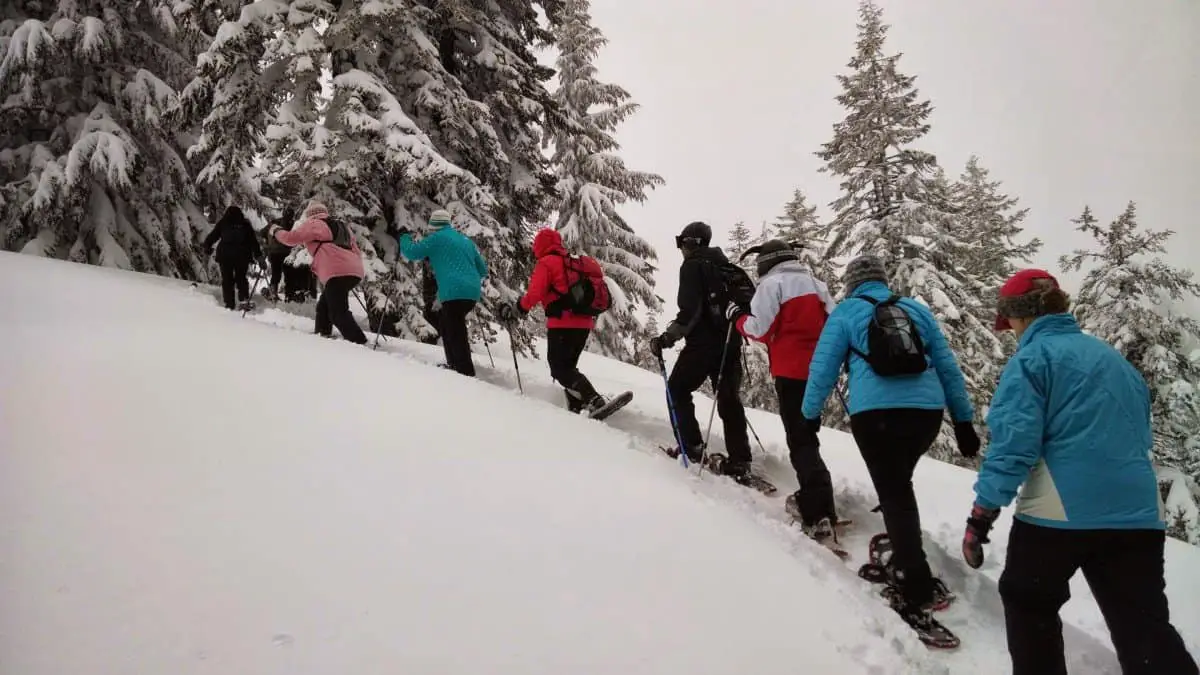
If you are still wondering why you would even go snowshoeing? Here are a few reasons:
Exercise: If you are looking for ways to remain fit and active even once the snow falls. Snowshoeing is a great aerobic exercise. Walking through snow is much more taxing than taking a gentle stroll and is a great way to get your heart rate up.
Inexpensive to start: If the prices of typical winter sports such as skiing and snowboarding prevent you from getting out in the snow, then you’ll be happy to know that snowshoeing is very inexpensive. Aside from your appropriate winter attire, all you need is a pair of snowshoes. Poles are recommended but they aren’t essential.
It’s simple to get started: Very few outdoor activities are super beginner friendly. Snowshoeing is simple and straightforward. there is a few techinques to help you go uphill, down-hill and traverse across a slope. But all 3 are easily mastered with a little practice.
Gear you need to start snowshoeing
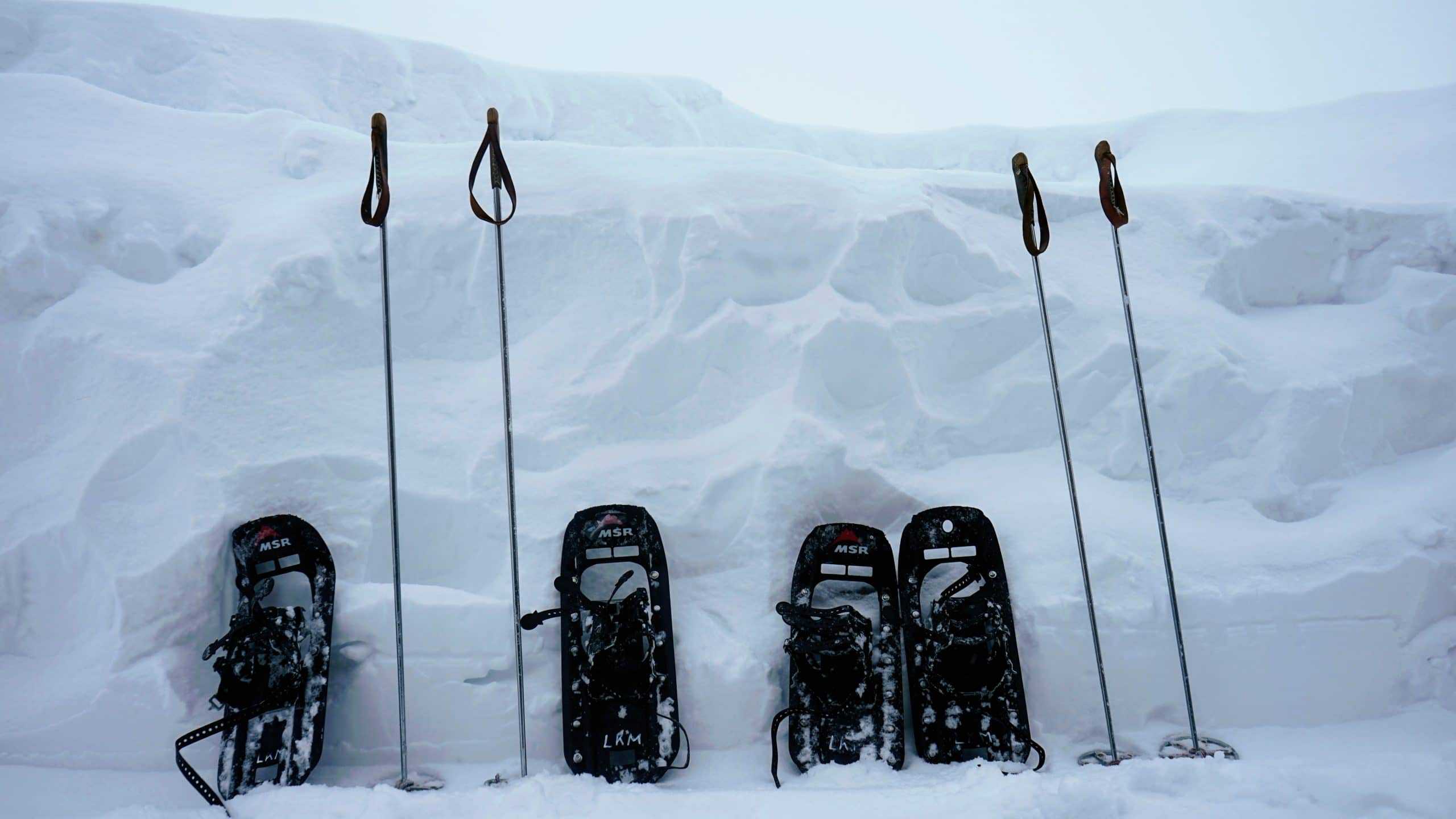
If you are brand new to snowshoeing, there is a few basic things you will need to get before you start. Here are the basics:
- Snowshoes that are correct for your weight, the conditions & terrain.
- Warm, waterproof & comfortable boots.
- Warm clothing layers that are suitable for cold and wet conditions.
- Adjustable poles (recommended for first-timers)
How to choose snowshoes
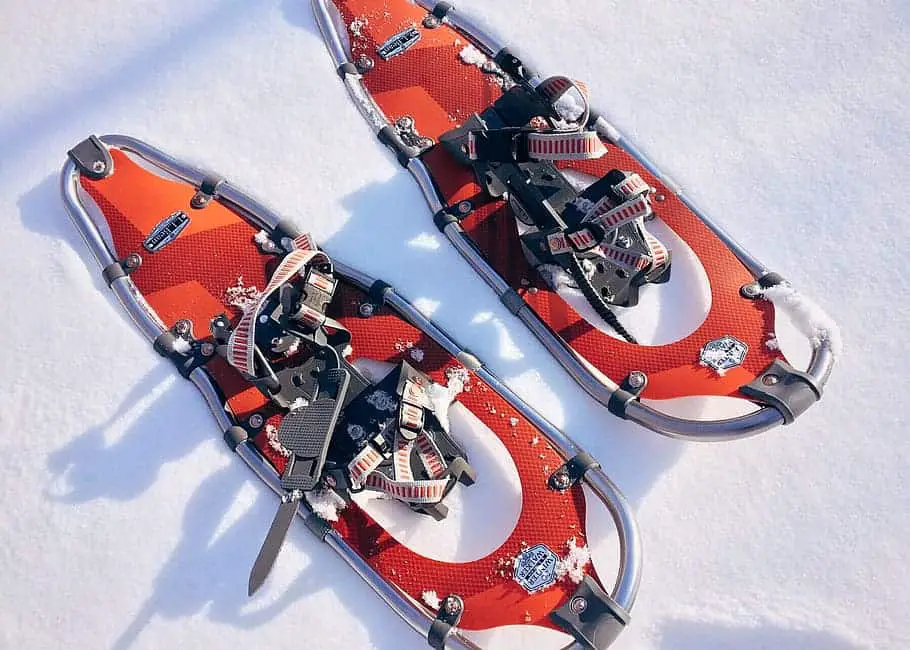
If you are just starting and aren’t 100% sure whether you have a love for snowshoeing or not, then renting the gear can be a great way to get started and you can always ask the advice of the experts at the rental shop.
If you are choosing to purchase a set of snowshoes then, flat terrain snowshoes are probably the best place to start. They are comfortable to wear and are designed to make walking on flat terrain simple. Perfect for beginners and families.
Snowshoes have a maximum recommended load, this prevents them from sinking into the snow and making walking difficult. The correct snowshoes will allow you to step firmly on the snow without sinking in. Remember when calculating your load, you take into consideration the gear you will be carrying.
How to dress for snowshoeing
Boots & Socks: Snowshoes can adjust to fit almost any type of boot or shoe. You ideally want to wear something that keeps your feet comfy, insulated and dry. A pair of waterproof hiking boots should do the trick. A thick pair of wool or synthetic socks are a good choice, remember to always pack an extra pair in case they do get wet!
Always dress in layers: When you’re exercising outdoors it’s always important to dress in a variety of layers which you can adjust depending on the activity level and weather. Avoid cotton, as it can get wet and cause you to get cold. Wool and synthetic materials are a better choice as they can wick moisture and retain heat even when wet.
- Base layer: Choose a lightweight or midweight base layer based on the temperature forecast and your activity level.
- Mid layer: Soft-shell jackets and pants make good insulating mid-layers because they retain heat when wet, move freely and breathe as you exercise. Polyester fleece mid-layers can also work in a pinch.
- Outer layer: For your outer layer, choose a waterproof, breathable shell jacket and pants to help keep you dry, and fend off wind.
- Hat and gloves/mittens: Keep your head and hands covered to prevent loss of body heat and to protect from sunburn.
- Gaiters: If you are heading out into deeper powered snow, gaiters can give you an extra layer of protection around your ankles and lower legs, preventing them from becoming wet.
How to snowshoe: Basic Techniques
How to snowshoe on flat terrain
Whether you are walking on flat or rolling ground, it is pretty instinctive. You should have a wider strike than what is required when hiking as you want to avoid stepping on the insides of your snowshoe frames. This can mean your hips and groin may ache after the first few times you snowshoe.
How to snowshoe uphill
You should use your toe or instep crampons for grip when snowshoeing uphill and firmly place your feet on the snow as well as having your poles in front of you. There are different techniques depending on the conditions.
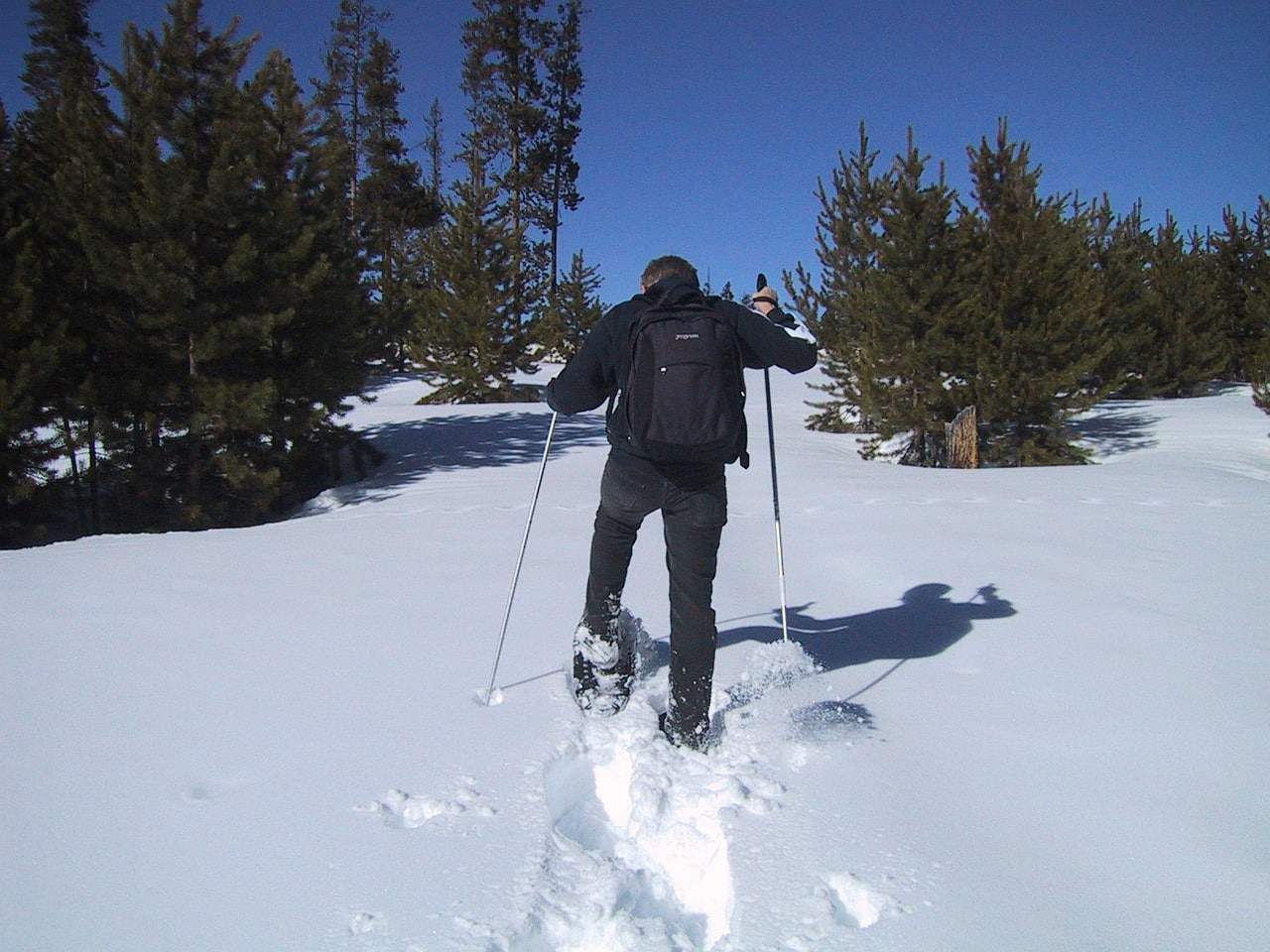
Powdery Snow
When in powdery snow, you should use the kick-step technique. This technique works best in these conditions as you are creating a ‘step’ solid enough to stand on.
Pick up your foot and kick the snow with the toe of the boot, you may need to do this a few times to ensure the step is stable enough. Your snowshoes should be on an angle with the slope and the backs of your shoe should be hanging downhill behind you.
This will plant the crampons or cleats into the snow, just under the balls of your feet. If you kick the snow and it creates a deep hole, you should find another route as the snow is not strong enough to hold your weight.
Hardpack Snow
On hardpack snow, kick-stepping may be difficult so you will rely on the traction of your snowshoe crampons and cleats as well as your poles. You should walk up the slope but if it becomes too steep to hold the grip you should find an easier route.
How to snowshoe downhill
When descending, your poles should be planted in front of you with your knees bent and your body weight slightly on your back foot. Walk slowly and plant your heel first firmly in the snow.
Depending on the slope, you may not use use the toe as an aid as you could risk your leg slipping down hill but you will be able to make this decision after a few strides to feel what is most comfortable for you.
Poles are used for additional balance and control as you descend but ensure you adjust them accordingly as they should be slightly longer for the descent.
Ensure you are steady and do not overswing your leg as this can lead to catching the back of the snowshoe, in turn, throwing you off balance. When descending, if the slope steepens you should add a little more of your bodyweight to the back leg to avoid falling. If you do feel yourself slipping then simply just sit down and slowly stand back up to regain your balance.
How to traverse on snowshoes
Traversing, sometimes known as “side-hilling” is a very common method used to avoid overly steep or challenging routes. It assists hugely when trying to keep your balance which is essential.
By pushing the uphill side of each snowshoe into the slope and keeping your weight on the uphill snowshow, it creates a shelf as you move up the slope to create a shelf as you move along. If you can, you should use the steps the person ahead of you has made.
To use your poles, you should extend the downhill pole and adjust the uphill pole to be shorter. You should do this to match the tips of the poles with the snow.
How to use snowshoe poles
Snowshoe poles can be optional on flat terrain but can come in handy in various ways on your snowshoeing adventure. They can provide you with a better and stronger balance as well as providing you with a good upper body workout. Adjustable poles are always advised as they can be adjusted depending on the slope or terrain to provide you with better balance.
Setting your pole can be dependent on which slope or terrain you are exploring but to set your pole for a regular, flat terrain you should flip your pole upside-down and hold the pole just under the basket. Adjust the length until your elbow is at a right angle.
By putting your hands up through the pole straps from below, you can rely on the straps when you need to relax your hands for a brief rest.
How to get back up after a snowshoeing fall
Although you won’t be falling often, you can and most likely will have a fall at some point when snowshoeing. More than likely, it will happen on descents which is why you should try and break the fall by falling to the uphill side if possible. If you feel yourself slipping on the snow the best option is to sit down as this will stop you from falling.
Before getting back up, you should slip your hands out of your pole straps and try to move yourself slowly until you are facing uphill again . Once you are facing the slope and your feet are straight downhill, pull your knees up close to your chest. You should press off the slope until you are upright on your knees after which you can then shift the weight to your snowshoes and stand up.
With poles: Slide the poles underneath your chest, keeping them parallel with the slope then use the poles to push up off the slope. If you find yourself on a flat terrain but with deep snow, the best option is to create an ‘X’ with your pole in front of your body then using the middle point of the ‘X’ as a brace whilst pushing yourself up.
Without poles: If you do not have poles, open up your hands and press down firmly into the snow which will create holes in the snow. Once you have created the holes, fill the holes with snow and pack down, repeat this process until you have a solid base to push yourself up from the slope.
How to run in snowshoes
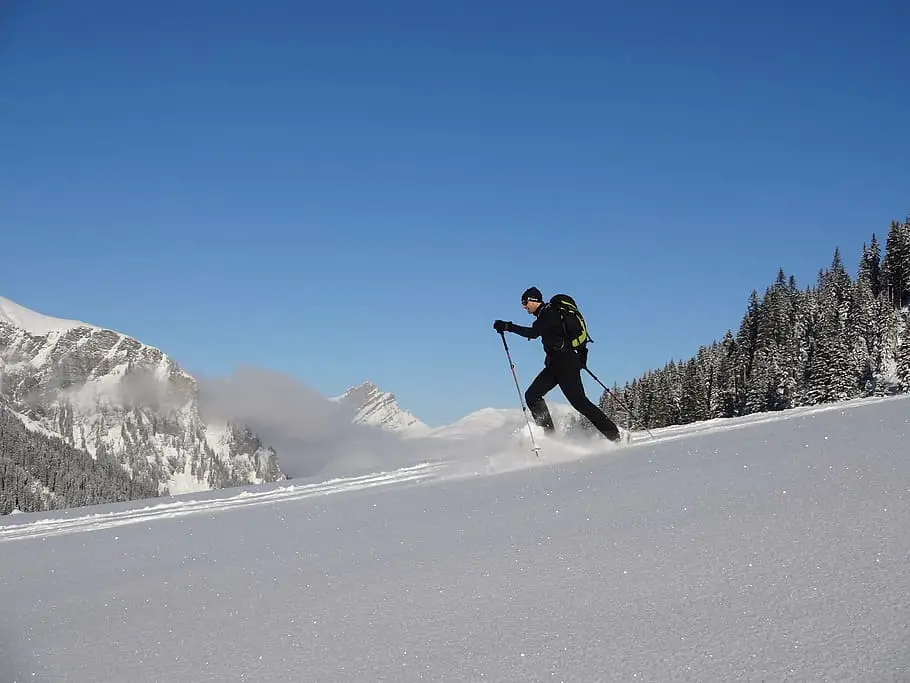
Running in snowshoes isn’t as common as the typical walking and hiking activities that most people do whilst out on the snow. However, it’s still a thing!
If you are wanting to run on the snow successfully, you will need to purchase a special pair of trail running snowshoes which are much lighter and narrower than your traditional snowshoes.
Instead of wearing hiking boots you’ll have to wear a pair of running shoes or cross trainers. Remember that these shoes won’t offer as much protection as your standard hiking boots, so expect to get a little wet!
Snowshoeing safety tips
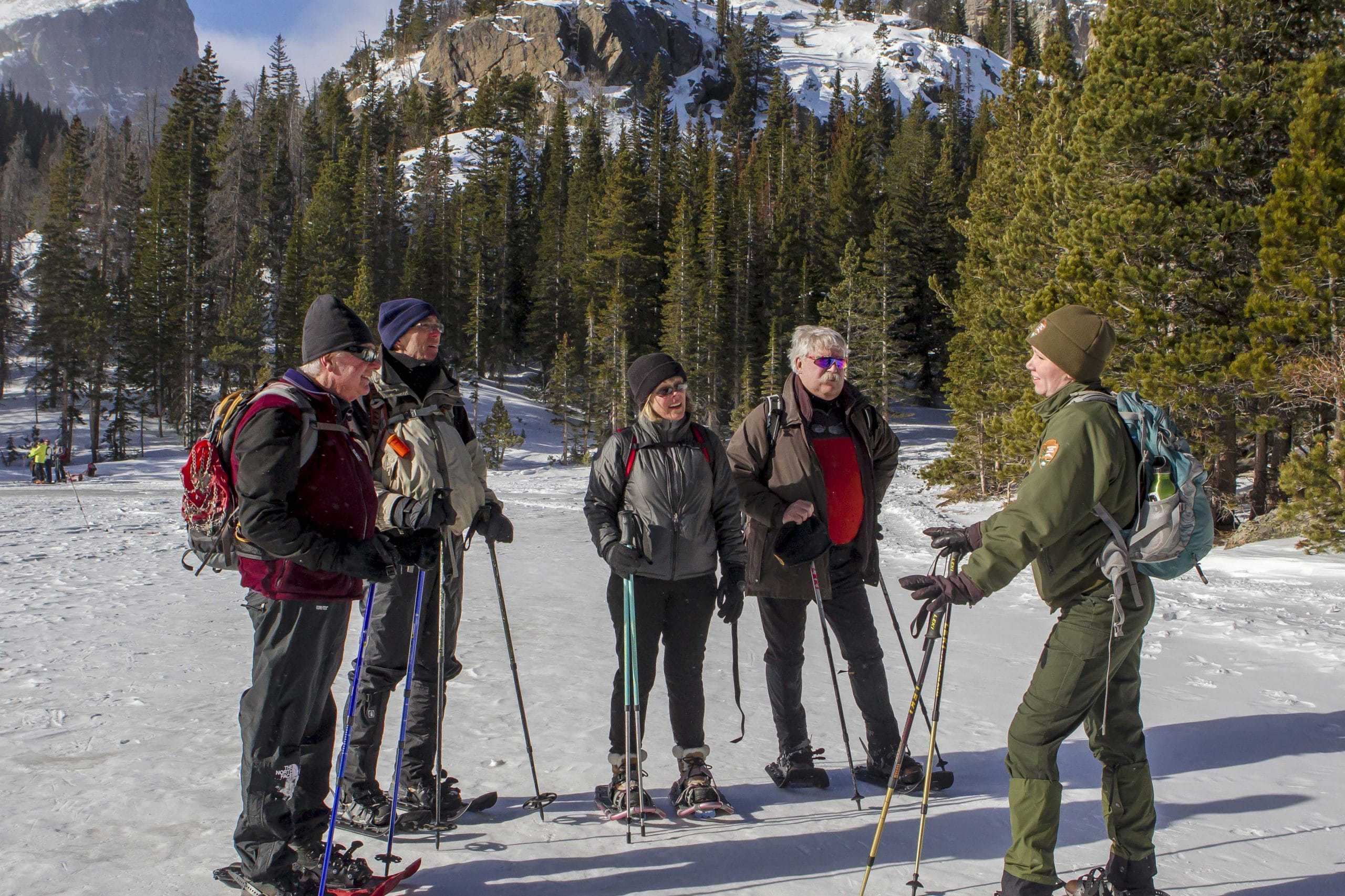
Of course spending time outdoors and especially in really cold environments where there is lots of snow doesn’t come without its risks. Whilst performing any outdoor activity, it is very important that you prioritise remaining safe.
Everybody’s knowledge is limited in one way or another, it’s important that you stay within the boundaries of your knowledge and don’t try to ‘push’ things a little too far.
You must also understand the limits of your gear and surroundings – Use well-established trails, if you are snowshoeing in a popular area, or a ski resort, there should be plenty of them. Avoid snowshoeing alone where possible and always leave a trip/route plan with a family member or friend.
Here are some additional safety tips:
- Maintain & regularly check your gear: Gear does have a lifespan, over time it will become worn and less effective. Always check your gear before you head out on a snowshoeing adventure and maintain it appropriately. You can always make sure you are using the safest and best gear possible by using a reputable rental shop.
- Know the environmental dangers: Be aware of your surroundings. Avoid unstable trees, cliffs, and bodies of ice/water. Check for avalanches and understand why they are caused. And always check the weather beforehand, avoid going out in treacherous conditions.
- Know how to navigate your way home: Carry a map and compass of the area, hopefully, you can get away with using your GPS, however, it’s worth learning how to use a map and compass so you can navigate your way through the surroundings and safely return back to safety.
- Stay well hydrated: Consuming water and liquid during cold weather might not be as obvious as in hot weather. However, the benefits are just as important. Remaining hydrated will keep your muscles functioning properly and it helps your body fend off hypothermia.
- Stay warm and dry: It’s important that whilst out in the cold you remain warm and dry because if you get cold and wet there is potential for you to become hypothermic. Remember to layer your clothing and wear a base layer (long underwear) to keep you warm. It’s also worth packing an extra set of base layers in case the one you are wearing gets wet.
Conclusion
The team at watersportingadventure.com truly hopes that you found this guide to snowshoeing comprehensive and useful for your first time out on the snow. There is no better feeling than exploring the outdoors with family and friends, especially when snowshoes have the ability to take you to places you couldn’t of otherwise.
Remember to follow the advice in this article and to always remain safe whilst out on the snow!
Remember: Safety is your responsibility. No internet article or video can replace proper instruction and experience—this article is intended solely as supplemental information. Be sure you’re practiced in proper techniques and safety requirements before you engage in any outdoor activity.

